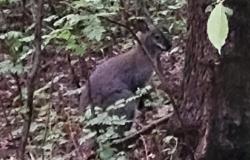The Flemish pig farming industry has had a positive cash flow since the end of 2022, according to the business cycle barometer that is published every quarter. KBC Bank calls the cash flow (the difference between income and expenditure) the most adequate parameter to express the profitability of a company or sector.
At the beginning of April, Flemish sow farmers received 81 euros per piglet. Including allowances, the piglet price was even 105 euros. Never before in history have sow farmers in Belgium received such a high amount for their piglets. These prices are in stark contrast to the piglet price at the end of 2021. At that time, a standard price of 10 euros was paid and the sector experienced a deep crisis, writes Vilt based on KBC Bank’s barometer.
Partly due to high piglet prices and falling feed prices, sow farmers had an annual cash flow of 1,600 euros per sow in the first quarter of this year. The traditional ‘autumn dip’ of 2023 seems to have been forgotten. KBC Bank explains the high piglet price by the imbalance between supply and demand.
Declining supply
There is additional demand for piglets from Spain, Germany and Poland. “The latter country is still struggling with African swine fever and in Spain a PRRS variant is still causing a lot of damage to sows and piglets,” explains Agro economist Jan Leyten of KBC Bank.
However, the good demand is offset by a declining supply. Leyten: ‘Due to the long, severe crisis from 2020 to 2022 and the stricter environmental measures, the sow herd has decreased in a number of European countries, including Flanders.’
Closed companies are also doing good business, according to the business cycle barometer. The average available cash flow is currently 50 euros per delivered fattening pig. That is a lot better than in the past five years. At that time, the average available cash flow was 18 euros per delivered fattening pig. In 2023, the cash flow averaged 52 euros, with a peak in May (80 euros) and a dip in the autumn (40 euros).
Thin margins
The type of pig farm that farms the worst, but still has a positive cash flow according to the barometer, are fattening pig farms. This sector is faced with high prices for piglets and a fattening pig price that has risen again from the autumn dip of 2023 to 1.58 euros per kilo (live, Danis). At the same time, feed prices have fallen by about 25 percent compared to a year and a half ago.
In the first quarter of 2024, this has resulted in a cash flow of approximately 10 euros per delivered fattening pig for fattening pig farming. “That is better than the five-year average of 8 euros,” reports KBC Bank. Last year, the available cash flow was approximately 20 euros per delivered fattening pig, which meant that fattening pig companies achieved ‘reasonable profitability’.
The thin margins may eventually lead to a decline in meat production in Flanders. ‘With falling meat prices and stable or rising piglet prices, fattening pig farmers can choose to postpone the introduction of pigs. This will dampen the piglet price. The piglets are there and they have to find their way in the market,” says Wouter Wytynck, expert at Boerenbond.
Wytynck notes that the greater flexibility of fattening pig farmers has ensured that the number of fattening pig places in Flanders has fallen less rapidly than the number of sow places in the past two years. ‘During the crisis, when the piglet price was historically low for a long time, relatively more sow farmers stopped farming.’
He also sees this trend in other European countries, such as Germany and Denmark. According to him, this imbalance means that the high piglet price may be structural.
Decline in fattening pigs
Although the number of sow places has decreased relatively more, the decline in fattening pigs is also significant. Flanders carried out 11 percent fewer slaughters last year compared to the year before. In Europe, the number of slaughters fell by 7.6 percent. KBC Bank sees no change in this for the time being.
In fact, environmental measures in various countries could cause the pig herd to decline even further in the coming years. For that reason, Leyten is positive about the long-term prospects for Flemish pig farmers. ‘The demand for pork is falling slightly, but the supply is falling much more.’






